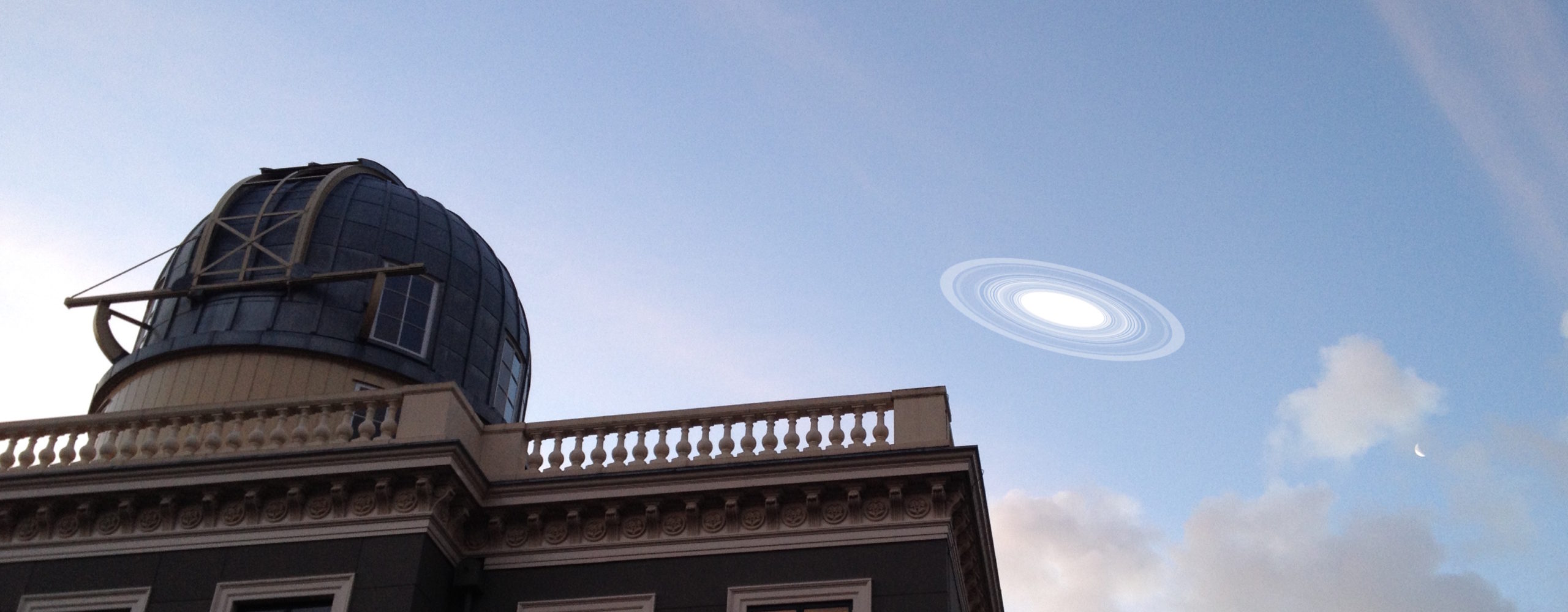A few years ago, astronomers discovered a bizarre object in orbit around a distant star. Preliminary research suggested an exoplanet with an oversized ring system roughly 200 times larger than Saturn’s. Researchers have now proven that this dramatic celestial structure is indeed possible — but for it to work, the rings need to spin in the wrong direction.
Illustration by artist Ron Miller of the gigantic ring system around J1407. (© Ron Miller. Used with permission.)
This glorious exoplanet is either a large gas giant or a brown dwarf, and it’s in orbit around J1407, a young sun-like star located 420 light-years from Earth. Observations made in 2007 by RIKEN’s Steven Rieder and Leiden University’s Matthew Kenworthy revealed a strange series of eclipses, which the researchers interpreted as a large planet with a gigantic ring system, perhaps as much as 200 times larger than the one wrapped around Saturn.

The rings are so large that we’d be able to see them from Earth at dusk if the planet was located in Saturn’s orbit. (Image: M. Kenworthy/ Leiden University)
Sceptics said the researchers were jumping to conclusions, pointing to the object’s exaggerated orbit. Every once in a while, this planet ventures quite close to its host star, and the ensuing gravitational effects could disrupt the rings.
To see if such a system could actually exist, Rieder and Kenworthy decided to conduct a series of simulations. Their findings, which have been accepted for publication in Astronomy & Astrophysics, show that the system is stable and that it can persist for more than 10,000 orbits of 11 years. That means this structure could last for about 100,000 years, which isn’t long in cosmological terms. So if true, we happen to be very lucky in observing such a fleeting and rare object.
But there’s one important caveat: This gargantuan ring system can only exist if the rings rotate opposite to how the planet orbits the star. “It might sound far-fetched — massive rings that rotate in opposite direction — but we have now calculated that a ‘normal’ ring system cannot survive,” noted Rieder in a release.
Objects that turn in the wrong direction are in a retrograde orbit, and they’re quite rare. In our solar system, all of the planets and most of the other objects orbit in a prograde motion, meaning they’re travelling in the same direction as the rotation of the sun. Most satellites, and even the rings of Saturn, also move in a prograde motion. For an object to be in retrograde, something must have happened, like a planet that captured a moon that formed elsewhere. In the case of this extraordinary planetary system, Rieder and Kenworthy say a catastrophic event — such as a massive collision — could have caused the rings or the planet to turn the other way around.
The researchers say it’s possible that the strange eclipses are being caused by a free floating object, but add that the “chance of that is minimal”. Looking ahead, the researchers are planning to investigate how the ring structure could have formed, and how it might change over time.
[Astronomy & Astrophysics; preprint available at arXiv]
